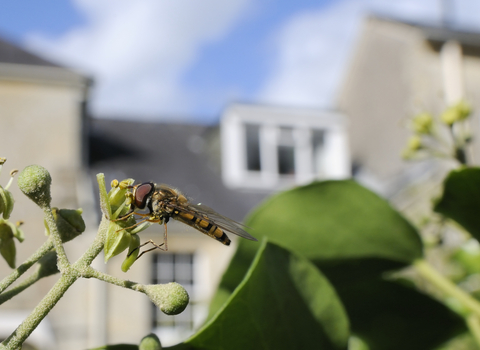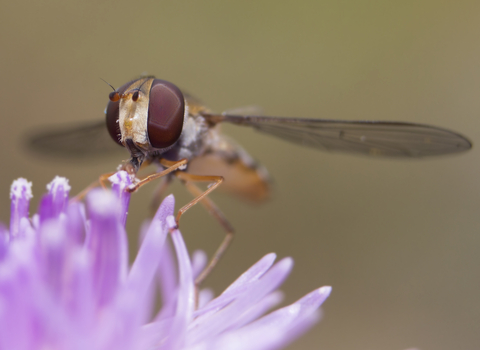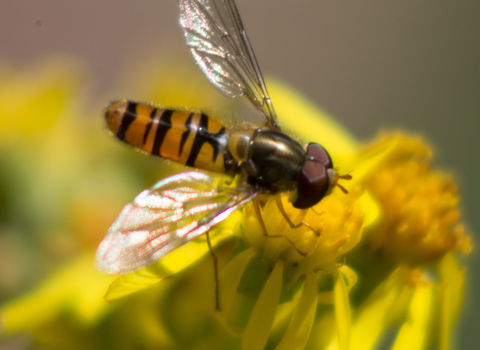
Marmalade hoverfly © Nick Upton/2020VISION

Marmalade hoverfly © Chris Lawrence

Marmalade Fly ©Sam Hockaday
Marmalade fly
Our most common hoverfly, the marmalade fly is orange with black bands across its body. It feeds on flowers like tansy, ragwort and cow parsley in gardens, hedgerows, parks and woodlands.
Scientific name
Episyrphus balteatusWhen to see
January to DecemberSpecies information
Category
Statistics
Length: 0.9-1.2cmCommon.
